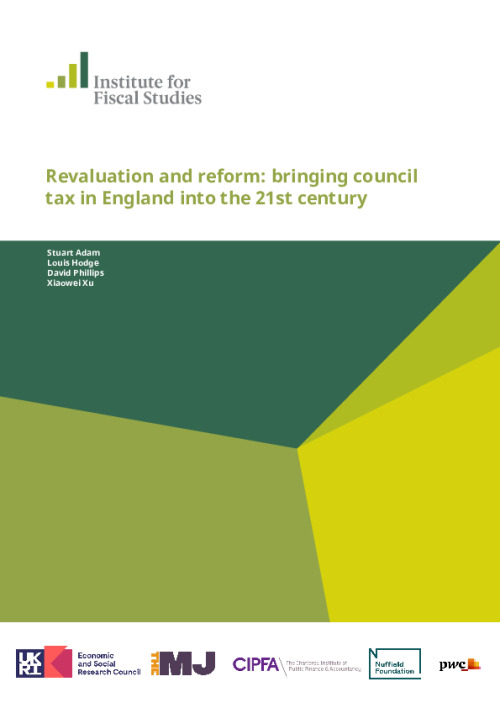Council tax matters. It matters to local government as, at over £31 billion a year, it now makes up over half of its funding for non-education expenditure. It matters for households, for whom the bills take up an average of over 3% of their income. And it matters to central government, which is ultimately responsible for the sustainability and suitability of the local government finance system and, like local government, can be subject to political difficulties when the populace is unhappy with the system.
Council tax bands in England are still based on property values in April 1991 – almost 30 years ago. Since then the relative prices of different properties have changed significantly: for example, official estimates suggest the average price in London is now more than six times what it was in 1995, compared with barely three times in the North East.
Moreover, the most valuable properties in 1991 (Band H) attract just three times as much tax as the least valuable properties (Band A), despite being worth at least eight times as much in 1991 and typically even more now, since prices have risen most in areas where they were already highest.
Council tax is therefore both increasingly out of date and arbitrary, and highly regressive with respect to property values. It is ripe for reform.
This report analyses the effect of updating and reforming council tax on different local authorities (LAs) and different household types in England. This is in the context of growing concerns about both wealth and regional inequalities, especially between the North and Midlands, where property values are much lower and have risen relatively slowly since 1991, and London and the South East, where they are much higher and have risen more.
Our main policy messages are:
- Council tax is out of date, regressive and distortionary. It needs to be revalued and reformed. Values of different properties have changed very differently since council tax was introduced – on average increasing more than twice as much in London as in the North East, for example – yet the tax has not changed to reflect that. This means properties are in increasingly arbitrary tax bands that may bear little relation to current reality: two households living in equally valuable properties in the same LA can find themselves paying tax bills hundreds of pounds apart just because their properties used to be worth different amounts in 1991. Council tax is also highly regressive with respect to property value, and the 25% discount for single-adult households encourages the inefficient use of property.
- Whether funding from central government were adjusted alongside reforms to council tax would have a crucial effect on the reforms’ impact across LAs. If it were not, each LA would need to raise just as much council tax revenue as before if it wanted to maintain spending – implying no change in the average tax bill in each LA, even as the amounts paid by individual households went up and down. With full adjustment of funding, average bills would change to reflect changes in local tax bases. For example, making council tax proportional to up-to-date values would lead to average bills falling by more than 20% across most of the North and Midlands, where average property values are typically relatively low. Conversely, they would rise in areas where property values are high and have risen most, notably in London and nearby commuter areas. In what follows, we assume funding is fully adjusted.
- Reform could make council tax much more progressive. Revaluation alone would have little effect on the average tax bills of different household types. But a proportional council tax would reduce net council tax bills by the equivalent of 0.5–0.9% of household income, on average, for households in the bottom half of the income distribution, whilst increasing average bills by 0.7% of household income for those in the top 10%. Younger households, renters and those receiving disability benefits would see their average bills fall. However, ethnic minority households, who disproportionately live in London, would see their average bill rise, reflecting the high value of their properties compared with other regions in England.
- While there may be particular concern about low-income losers from reforms, it is important to recognise they would be massively outnumbered by low-income winners. For example, 24% of the poorest fifth of households would see their net tax bill fall by more than £200 a year under a proportional council tax, while just 4% would see it increase by more than £200 a year. Many would see little or no change because their bills are fully or largely covered by council tax support, which could be made more generous if the government wanted to mitigate the impact of reforms further. The government could also consider transitional relief and deferral of payments – although getting the design of deferral schemes right is vital to avoid undermining tax revenue.
- Revaluation and reform of council tax could help narrow household and geographical wealth inequalities via effects on property prices. Economic theory and empirical evidence suggest that changes in property taxes get largely or fully reflected in rents and property prices. This means that a proportional property tax would narrow the gap in property wealth between owners of high- and low-value properties and, if accompanied by redistribution of funding from central government, between areas with low and high property values. The scale of these impacts is highly uncertain, though.













